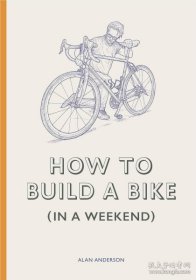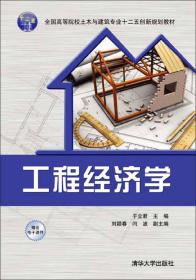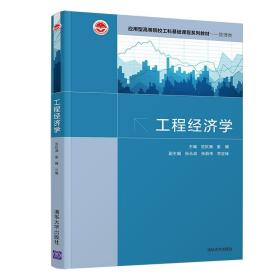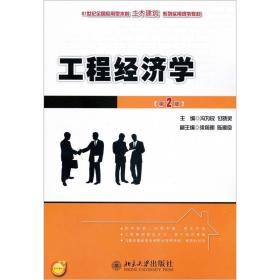
新华正版 工程经济学(第17版) [美]威廉·G.沙利文(William G. Sullivan),[美]埃琳·M.威克斯(Elin M. Wicks),[美]C.帕特里克·科林 9787302565413 清华大学出版社 2020-10-01
新华书店直发 全新正版 急速发货 开票联系客服
¥ 78.05 7.2折 ¥ 108 全新
库存4件
作者[美]威廉·G.沙利文(William G. Sullivan),[美]埃琳·M.威克斯(Elin M. Wicks),[美]C.帕特里克·科林
出版社清华大学出版社
ISBN9787302565413
出版时间2020-10
装帧平装
开本16开
定价108元
货号1202172153
上书时间2023-07-06
- 最新上架
商品详情
- 品相描述:全新
- 商品描述
-
前言
PREFACE
We live in a sea of economic decisions. —Anonymous
Proudly serving engineering educators and students for over 75 years
About Engineering EconomyA succinct job description for an engineer consists of two words: problem solver. Broadly speaking, engineers use knowledge to .nd new ways of doing things economically. Engineering design solutions do not exist in a vacuum but within the context of a business opportunity. Given that every problem has multiple solutions, the issue is, How does one rationally select the design with the most favorable economic result? The answer to this question can also be put forth in two words: engineering economy. Engineering economy provides a systematic framework for evaluating the economic aspects of competing design solutions. Just as engineers model the stress on a support column, or the thermodynamic response of a steam turbine, they must also model the economic impact of their recommendations.
Engineering economy—what is it, and why is it important? The initial reaction of many engineering students to these questions is, “Money matters will be handled by someone else. They are not something I need to worry about.” In reality, any engineering project must be not only physically realizable but also economically affordable. This book is about how to make smart economic choices.
Understanding and applying economic principles to engineering have never been more important. Engineering is more than a problem-solving activity focusing on the development of products, systems, and processes to satisfy a need or demand. Beyond function and performance, solutions must also be viable economically. Design decisions affect limited resources such as time, material, labor, capital, and natural resources, not only initially (during conceptual design) but also through the remaining phases of the life cycle (e.g., detailed design, manufacture and distribution, service, retirement, and disposal). A great solution can die a certain death if it is not pro.table.. MyLab Engineering is available with Engineering Economy, 17/e and provides a powerful homework and test manager which lets instructors create, import, and manage online homework assignments, quizzes, and tests that are automatically
16 PREFACE
graded. You can choose from a wide range of assignment options, including time limits, proctoring, and maximum number of attempts allowed. The bottom line: MyLab Engineering means less time grading and more time teaching.
.
Automatically graded and algorithmic-generated homework assignments, quizzes, and tests that directly correlate to the textbook..
Automatic grading that tracks students’ results..
Assignable Auto-Graded Excel Projects let students master key Excel skills within the application and receive immediate feedback on their work..
Interactive “Help Me Solve This” tutorials provide opportunity for point-of-use help and more practice..
Learning Objectives mapped to ABET outcomes provide comprehensive reporting tools..
Video Solutions are available to help explain concepts or walk students through example exercises from the book.What’s New to This Edition?
Our intent in revising the text is to continue integrating computer technology and realistic examples to facilitate learning engineering economy. Here are the highlights of changes made in the publication of the seventeenth edition:
.
Approximately half of all end-of-chapter problems have been replaced with fresh, new problems..
The “Try Your Skills” problem sets at the end of Chapters 1 through 8 have been doubled in problem count. “Try Your Skills” problem sets have also been added for Chapters 9 through 11..
Appendix A, a description of accounting fundamentals, has been rewritten and added to the book..
Group in-class problem exercises have been added to the majority of chapters in the seventeenth edition. These exercises are ideal for in-class, team-based problem solving with three to four students in each group..
Appendix H, which features answers to selected end-of-chapter problems, has been added to this new edition..
Problem-solution videos have been updated and expanded. These videos provide students with step-by-step solution methods and demonstrate both by-hand and spreadsheet solutions. These complement the MyLab Engineering software that has been a popular feature of previous editions.Strategies of This Book
This book has two primary objectives: (1) to provide students with a sound understanding of the principles, basic concepts, and methodology of engineering economy; and (2) to help students develop pro.ciency with these methods and with the process for making rational decisions they are likely to encounter in professional practice. Interestingly, an engineering economy course may be a student’s only college
PREFACE 17
exposure to the systematic evaluation of alternative investment opportunities. In this regard, Engineering Economy is intended to serve as a text for classroom instruction and as a basic reference for use by practicing engineers in all specialty areas (e.g., chemical, civil, computer, electrical, industrial, and mechanical engineering). The book is also useful to persons engaged in the management of technical activities.
This book is written to appeal to engineering students with a wide variety of personal interests and majors. Our students are like most college students, varied in their educational and career interests and eager for challenging work that will inspire them. The explanations and examples in the book are student-centered and eminently practical in real-life situations. In addition, multimedia resources are available online in MyLab Engineering for students and instructors looking to supplement the print book’s contents.
As a textbook, the seventeenth edition is written principally for the .rst formal course in engineering economy. A three-credit-hour semester course should be able to cover the majority of topics in this edition, and there is suf.cient depth and breadth to enable an instructor to arrange course content to suit individual needs. Representative syllabi for a three-credit and a two-credit semester course in engineering economy are provided in Table P-1. Moreover, because several advanced topics are included, this book can also be used for a second course in engineering economy.
All chapters and appendices have been revised and updated to re.ect current trends and issues. Also, numerous exercises that involve open-ended problem statements and iterative problem-solving skills are included throughout the book. A large number of the 750-plus end-of-chapter exercises are new, and many solved examples representing realistic problems that arise in various engineering disciplines are presented.
In the 21st century, the world is turning over a new leaf for environmental sustainability. We have worked hard to capture this spirit in many of our examples and end-of-chapter problems. In fact, more than 160 “green” problems and examples have been integrated throughout this edition. They are listed in the Green Content section following the Preface.
FE Practice Problems are included to help prepare engineering students for milestone examinations similar to the Fundamentals of Engineering written examination in the United States and a few other countries.
It is generally advisable to teach engineering economy at the upper division level. Here, an engineering economy course incorporates the accumulated knowledge students have acquired in other areas of the curriculum and also deals with iterative problem solving, open-ended exercises, creativity in formulating and evaluating feasible solutions to problems, and consideration of realistic constraints (economic, aesthetic, safety, etc.) in problem solving.
Also available to adopters of this edition is an instructor’s solutions manual and other classroom resources. In addition, PowerPoint visual aids are readily available to instructors. Visit www.pearsonglobaleditions.com for more information.
商品简介本书系统介绍了工程经济分析的理论、原理、方法和应用案例。全书共分为3部分。第1部分是工程经济基本原理,主要阐述工程经济分析的基本原则、重要的成本概念和估计技术、货币时间价值原理等工程经济学的基本概念和原理;第2部分介绍工程经济基本方法,深入分析了投资方案的赢利性评价方法和比选方法,折旧、所得税、通货膨胀等队评价方法的影响,设备更新分析方法,不确定性分析方法;第3部分为工程经济分析方法特别专题, 内容包括公共项目的费用效益分析方法、风险分析技术和融资及资本预算方法。
作者简介威廉?G.沙利文(William G. Sullivan),弗吉尼亚理工学院暨州立大学(Virginia Polytechnic Institute and Stete University)教授
目录第1章引言
1.1四旋翼飞行器
1.2国内外研究现状
1.3四旋翼飞行器的典型应用
第2章常用模块
2.1运动传感器
2.1.1MPU6050六轴传感器
2.1.2MPU9150九轴传感器
2.1.3MPU9250九轴传感器
2.2超声波传感器
2.2.1超声波传感器US100
2.2.2超声波传感器KS109
2.3光流传感器
2.3.1CJMCU110
2.3.2PX4Flow
2.3.3PWM3901
2.42.4G无线通信模块NRF24L01
2.5飞行控制芯片
2.6舵机
2.6.1舵机的工作原理
2.6.2SG90舵机
2.7电源系统
2.8电调驱动
2.9电机选型
2.10分压板
2.11四旋翼电池、电机、螺旋桨搭配选型
2.12图像处理板模块
第3章四旋翼飞行器的原理
3.1基本原理
3.2四旋翼飞行器的6个基本飞行动作
3.2.1升降运动
3.2.2俯仰运动
3.2.3横滚运动
3.2.4偏航(自旋)运动
3.3姿态解算
3.3.1姿态表示
3.3.2数据滤波
3.3.3数据融合
3.3.4姿态解算
3.3.5PID平衡算法
第4章四旋翼飞行器的调试平台
4.1四旋翼飞行器调试平台的总体设计
4.2调试平台的硬件设计
4.2.1地面站
4.2.2飞行控制板
4.2.3四旋翼飞行器的调试原则
4.3调试平台软件设计
4.3.1地面站软件设计
4.3.2上位机软件设计
第5章四旋翼飞行器的飞行控制
5.1飞行控制板控制系统总体框架
5.2所用器件
5.3四旋翼飞行器的组装
5.3.1飞行器的整体组成
5.3.2飞行器的组装步骤
5.4地面站
5.5飞行控制板的功能
5.6软件结构
5.6.1飞行控制板软件结构
5.6.2通信数据帧格式
5.7光流传感器
5.7.1PX4Flow光流传感器
5.7.2Qgroundcontrol软件的使用
5.7.3PX4Flow光流调试
<
相关推荐
— 没有更多了 —
![新华正版 工程经济学(第17版) [美]威廉·G.沙利文(William G. Sullivan),[美]埃琳·M.威克斯(Elin M. Wicks),[美]C.帕特里克·科林 9787302565413 清华大学出版社 2020-10-01](https://www0.kfzimg.com/sw/kfz-cos/kfzimg/eccabcfe/c90f0384cd4e5cbf_b.jpg)










![新华正版 工程经济学(第17版) [美]威廉·G.沙利文(William G. Sullivan),[美]埃琳·M.威克斯(Elin M. Wicks),[美]C.帕特里克·科林 9787302565413 清华大学出版社 2020-10-01](/dist/img/error.jpg)









以下为对购买帮助不大的评价